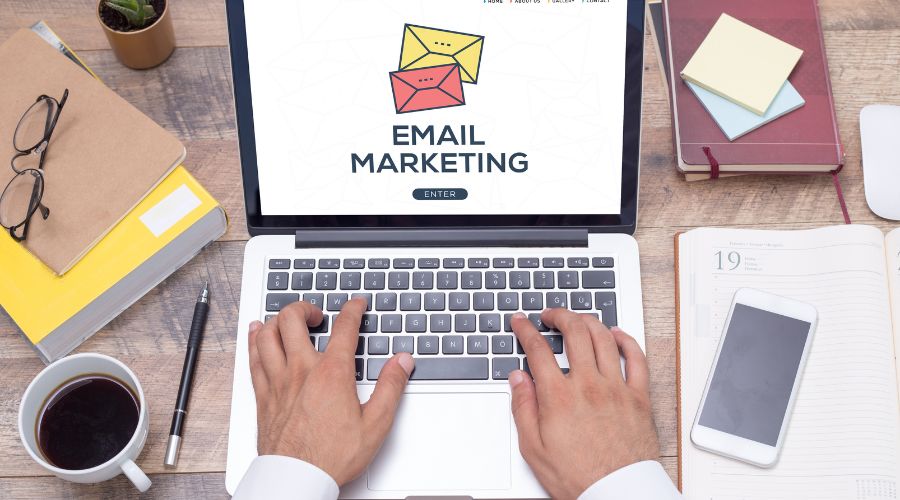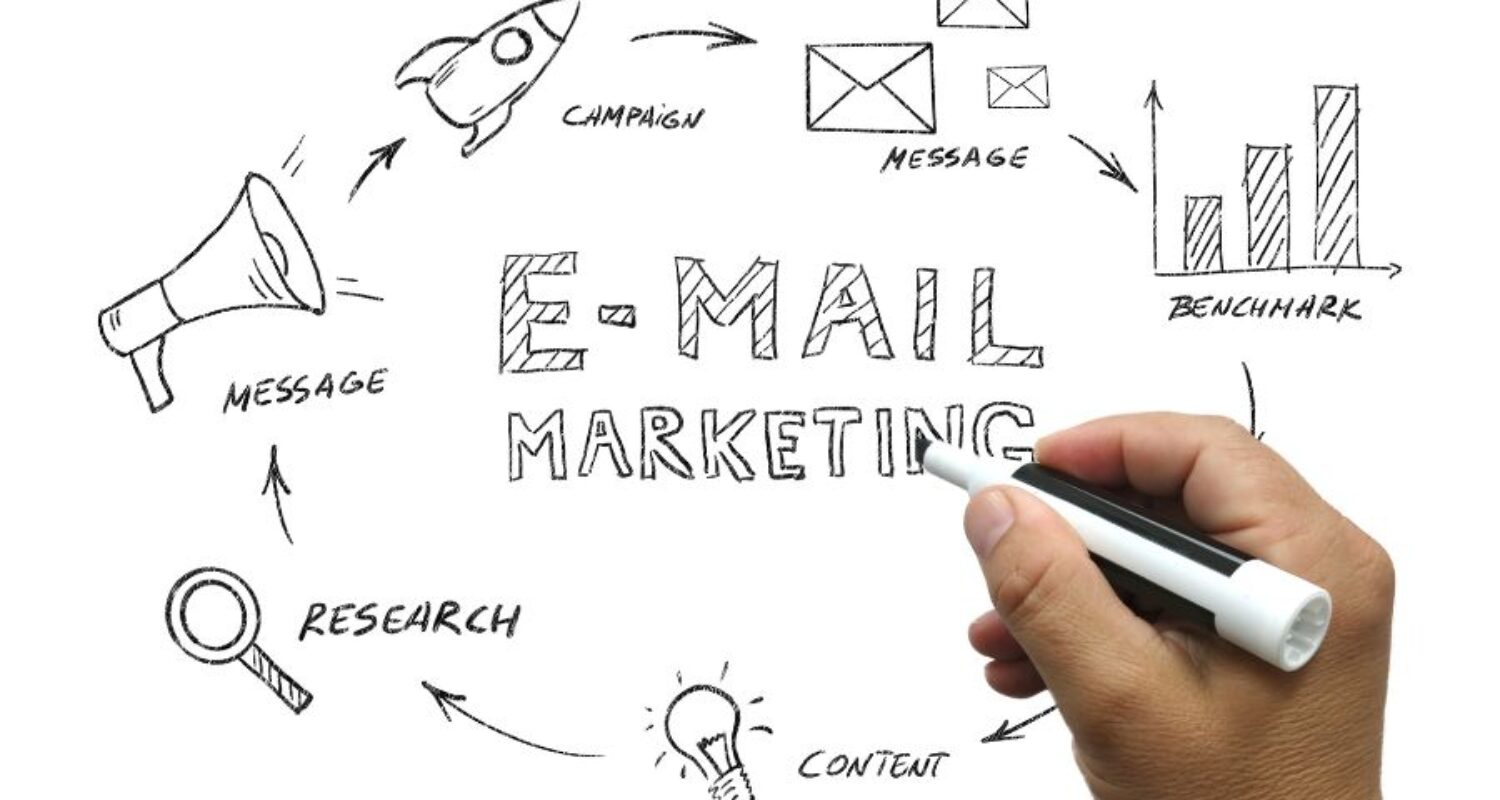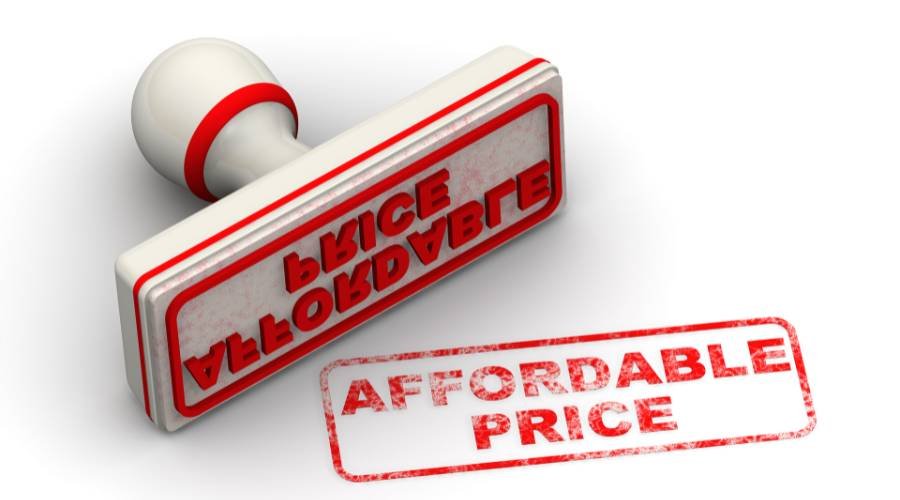Email marketing is key in today’s restaurant world. But how can we use it to boost our success? Let’s explore the power of email marketing for restaurants together. You’ll discover new ways to connect with your customers.
In Australia, email marketing is becoming more important for restaurants. By 2022, 4.3 billion users will be using email worldwide. Restaurants that use email can attract repeat customers and build a loyal fan base. After all, 68% of guests want monthly updates on menu changes and promotions via email.
Email marketing does more than just keep customers informed. It can turn occasional visitors into loyal fans. It also promotes deals and invites customers to exclusive events. By using email, restaurants can increase repeat business and become a local favorite.
Key Takeaways
- Email marketing is a powerful tool for restaurants to increase orders, generate repeat customers, and build brand loyalty.
- Effective email marketing can turn occasional visitors into loyal fans, promote deals and offers, and invite customers to food events.
- Key benefits of email marketing for restaurants include generating repeat customers, becoming a local restaurant brand, building a loyal customer base, and promoting deals more effectively.
- Leveraging email marketing can help restaurants stay ahead of the curve as organic reach on social media platforms declines and advertising costs increase.
- Restaurants can utilize various strategies to build a robust email list, including offering free Wi-Fi, collecting email addresses after meals, and utilizing pop-up forms and landing pages.

Understanding Restaurant Email Marketing Fundamentals
Email marketing is a key tool for restaurants to connect with customers and grow their business. It helps share promotions, updates, and content to build loyalty and awareness. In the restaurant world, email marketing is vital because it’s cost-effective and reaches everyone.
Email Marketing for Restaurants: Why It’s Essential for Customer Engagement
Email marketing is a top choice for restaurants to engage with customers. Here’s why it’s so important:
- High ROI: Email marketing gives an average return of $36 for every $1 spent, making it very effective.
- Customer preference: 72% of Americans like getting emails from businesses, while only 17% prefer social media.
- Personalization: Personalized emails can boost open rates by up to 29%, showing the value of tailored content.
Key Benefits of Email Marketing in the Restaurant Industry
Email marketing offers many benefits for restaurants, including:
- Increased brand awareness and customer engagement
- More website traffic and better multi-channel marketing
- Ownership of customer data, even when changing providers
- Innovative marketing through automated email platforms
Current Email Marketing Statistics for Restaurants
The restaurant industry has seen great email marketing stats lately:
| Metric | Value |
|---|---|
| Average open rate for restaurant emails | 38.5% |
| Average click-through rate (CTR) for restaurant emails | 0.68% |
| Ideal email subject line length | 17-30 characters |
| Average weekly email frequency for restaurants | 1 email per week |
| Average marketing budget spent on email marketing | 15% |
These stats show email marketing’s huge potential in the restaurant world. Restaurants should use it to connect with customers effectively.
Building a Powerful Restaurant Email List
In the world of restaurant marketing, having a strong email list is key. It helps drive customer engagement and loyalty. By using email list building for restaurants, you can connect with your audience, promote your offerings, and increase your profits.
To grow your restaurant’s email list, offer incentives like coupons or free appetizers. You can also use pop-ups on your website or ask for email registration before orders. Plus, running loyalty or reward programs and promoting them on menu cards and social media can help capture email addresses.
- Offer incentives like coupons or free items for email sign-ups
- Use website pop-ups and require email registration for orders
- Promote loyalty or reward programs to grow your email list
Another way to build your email list is through food challenges, contests, or exclusive events. These activities create excitement and give customers a reason to share their email addresses.
In tourist areas, offering free Wi-Fi for email sign-ups is effective. It captures valuable data and improves the dining experience for guests.
To optimize your email list building, create dedicated landing pages for offers and promotions. Promote them on your website, social media, and menus. A comprehensive and strategic approach will help you build a powerful email list for your restaurant’s marketing and customer engagement.
| Tactic | Description | Key Benefits |
|---|---|---|
| Offer Incentives | Provide coupons, free items, or discounts in exchange for email sign-ups | Incentivizes customers to share their email addresses, leading to list growth |
| Leverage Website Pop-ups | Use strategic pop-ups on your website to capture email addresses | Easily integrates with your website, allowing you to target visitors directly |
| Promote Loyalty Programs | Encourage customers to join your restaurant’s loyalty or reward program | Builds a base of engaged customers who are more likely to share their email information |
| Organize Contests and Events | Run food challenges, contests, or exclusive events that require email sign-ups | Generates excitement and enthusiasm, leading to increased email list growth |
| Offer Free Wi-Fi | Provide free Wi-Fi in your restaurant in exchange for email addresses | Enhances the customer experience while capturing valuable contact information |
By using these strategies, restaurant owners can build a strong email list. This list is a key part of their email marketing efforts. It helps drive customer loyalty and boosts their business success.
Essential Tools and Platforms for Restaurant Email Marketing
Restaurant owners know how powerful email marketing is. It helps engage customers and increase sales. To make the most of it, we need the right tools and platforms. Let’s explore the key solutions that can boost your restaurant’s email marketing.
Choosing the Right Email Service Provider
When picking an email service provider (ESP), look for features that meet your needs. Important things include database segmentation, email automation, and good customer support. EngageBay, ActiveCampaign, GetResponse, and Benchmark Email are popular choices in the restaurant world. They offer various pricing plans, from free to enterprise, to fit your budget.
Integration Tools for Restaurant Websites
To link your email marketing with your website, use platforms that integrate well. Tablein and OpenTable can help you collect email addresses and send out emails. They also let you promote special deals during the booking process. This integration makes talking to customers easier and improves their dining experience.
Analytics and Tracking Solutions
It’s important to track how well your email campaigns are doing. Look for ESPs with strong analytics and tracking tools. These tools show you things like open rates and click-through rates. This info helps you make your emails better and reach more people with your email automation for restaurants and email newsletter for restaurants.
| Email Service Provider | Pricing Range | Key Features |
|---|---|---|
| EngageBay | $0 to $73.59/month | Database segmentation, email automation, customer support |
| ActiveCampaign | $29 to $259/month | Email automation, CRM integration, advanced analytics |
| GetResponse | $15.6 to $999/month | Drag-and-drop email builder, webinar integration, landing pages |
| Benchmark Email | $20/month (with free trial) | Template library, automated campaigns, list management |
Email Marketing for Restaurants: Strategies That Drive Results
Email marketing is a strong tool for restaurants to connect with customers, boost sales, and build strong relationships. It’s a cost-effective way to market. Restaurants can use email campaigns to reach more people.
Segmenting your email list is key to email marketing for restaurants. Divide your list by customer preferences, demographics, or how they dine. This way, you send messages that speak to each group. It makes your emails more personal and engaging.
Designing your emails well is also important. Use templates that look good on any device. Make sure your subject lines grab attention and your calls to action are clear. This helps people want to open and act on your emails.
Having a content calendar for restaurant email campaigns is smart. Plan your emails around holidays, local events, or when you change your menu. This makes your emails timely and valuable to your customers.
To make your email promotions for restaurants better, try A/B testing. Test different subject lines, designs, and content. This helps you find what works best and keeps improving your emails.
But remember, too many emails can be bad. It can make people unsubscribe. Try to send one to two emails a week. Each email should add value and make the customer feel special.

Creating Compelling Restaurant Email Content
Making your emails look good and match your restaurant’s style is key. Use top-notch pictures and think about getting a graphic designer if you need to. Make sure the email starts with the best part, like a great deal or a tasty dish, to grab your readers’ attention right away.
Writing Effective Subject Lines
Your email’s subject line is its first impression. So, it’s vital to make it catchy to get more open. Use data to find out what works best for your audience. Try out different subject lines, like using fun emojis or making things seem urgent, to see what gets the most clicks.
Call-to-Action Best Practices
Put clear call-to-action (CTA) buttons in your emails to get people to act. Whether it’s booking a table, ordering food to go, or using a special offer, make it easy to do. Use words that tell people what to do and make the buttons stand out so they can’t miss them.
Share more than just deals and promotions. Give your audience something valuable, like recipes, cooking tips, or stories from behind the scenes. This can help you connect with your audience better and keep them interested, even when things are tough, like during the COVID-19 pandemic. You might need to change your email promotions for restaurants to include takeout, delivery, or online cooking classes.
Segmentation and Personalization Techniques
In the world of restaurant email marketing, segmentation, and personalization are crucial. They help increase engagement and loyalty. By making your emails specific to certain groups, you create a more personal experience.
Start by segmenting your email list by location, preferences, or past orders. This lets you send messages that speak to each group. For instance, you could offer a special deal for local customers or suggest menu items based on their past choices.
Personalization goes further by using the customer’s name and referencing their past orders. This creates a closer bond. Salesforce found that using data for targeting and segmenting helped top businesses more than others.
Using email personalization for restaurants and dynamic segmentation automates the customer journey. You can send birthday greetings, welcome new subscribers, or try to win back inactive ones. The goal is to use data to offer a personalized experience that keeps customers coming back.
Segmentation and personalization are key in restaurant email marketing. They help you understand what your customers want. This leads to better open rates, more clicks, and stronger restaurant loyalty programs via email.
Automation and Trigger-Based Campaigns
In the fast-paced world of the restaurant industry, efficiency is key. Email automation and trigger-based campaigns are powerful tools. They save time, boost customer engagement, and drive results for your business.
Birthday and Anniversary Automation
Personalized celebrations make customers feel valued. Automating birthday and anniversary emails sends timely, personalized messages. These messages come with special offers, delighting loyal patrons.
This thoughtful gesture strengthens customer relationships. It encourages repeat visits.
Welcome Series Setup
First impressions are crucial. An automated welcome series introduces new subscribers to your restaurant. It showcases your menu, shares your story, and offers enticing initial incentives.
This helps build trust and foster engagement. It encourages conversions from the start.
Re-engagement Campaigns
Maintaining customer relationships is an ongoing challenge. Email drip campaigns for restaurants help reach out to inactive customers. They remind them of your offerings and entice them to visit again.
Automated re-engagement campaigns can be tailored to different customer segments. This ensures your messages resonate.
The power of email automation for restaurants lies in its ability to streamline marketing efforts. It delivers personalized experiences and drives measurable results. By strategically implementing these automated campaigns, you can save time, enhance guest engagement, and boost your restaurant’s revenue.
Measuring Success and Analytics
In Australia, we know how key it is to watch how our email marketing does. By looking at important numbers, we learn a lot. This helps us make our strategies better to get even more results.
One key thing we check is our email open rate. The average is 22.86%, but we aim higher. We make our subject lines catchy and our content speaks to our customers. We also keep an eye on click-through rates (CTR), which are about 3.71% for restaurants.
We use Google Analytics to see how our emails affect our website and sales. This way, we can see how our emails help our business grow. Email marketing can bring up to 122% return on investment.
FAQ
What makes email marketing essential for restaurants?
Email marketing is key for restaurants because it offers a high return on investment. It lets you reach everyone without extra costs. Plus, people like getting emails from their favorite places.
The average open rate for hospitality emails is 40%, higher than the overall average of 32%. It’s better than other ways to get and keep customers.
What are the key benefits of email marketing in the restaurant industry?
Key benefits include getting repeat customers and becoming a local brand. It helps build a loyal customer base and promotes deals well.
What are some current email marketing statistics for restaurants?
68% of guests want monthly updates about menu changes, promotions, or invites via email. Good email marketing can turn occasional visitors into loyal fans. It promotes deals and invites customers to food events.
How can restaurants build a powerful email list?
Restaurants can grow their list by offering free appetizers or desserts for signing up. Use pop-ups on the website and ask for registration before orders. Organize loyalty or reward program sign-ups.
Running food challenges, contests, or private events can also grow the list. Offering free Wi-Fi for email sign-ups is effective, especially in tourist areas. Create dedicated landing pages for offers and promote them through various channels.
What essential tools and platforms are used for restaurant email marketing?
Essential tools include a WordPress site, WooCommerce for order management, and Mail Mint for email automation. A phone app for notifications and registrations is also important. When choosing an email service provider, look for features like database segmentation and good customer support.
Consider platforms that offer integration with restaurant websites. They should provide robust analytics and tracking solutions to measure campaign performance.
What are some effective strategies for restaurant email marketing?
Effective strategies include segmenting the email list and focusing on design to stand out. Use bespoke landing pages for specific campaigns. Create a content calendar for relevant dates like holidays or local events.
Implement A/B testing to optimize subject lines, design, and content. Use UTM codes to track campaign success and integrate with Google Analytics for detailed data analysis. Avoid spamming by limiting email frequency and ensuring each email provides value.
How can restaurants create compelling email content?
Create visually engaging emails that match your brand. Use high-quality imagery and consider hiring a graphic designer if needed. Format the layout to highlight the most engaging deal or message at the beginning.
Write compelling subject lines to improve open rates. Include clear and prominent call-to-action buttons. Share content like recipes, cooking tips, or behind-the-scenes stories to add value beyond promotions.
During special circumstances like COVID-19, adjust content to focus on takeout options, delivery services, or virtual cooking classes.
What are some segmentation and personalization techniques for restaurant email marketing?
Segment your email list based on location, last order date, or dining preferences. This allows for tailored emails that are more relevant to specific customers. Personalize emails by including the customer’s name and referencing their past orders or preferences.
Create targeted campaigns for different customer segments. This includes frequent diners, special occasion visitors, or those who haven’t visited in a while.
How can restaurants use automation and trigger-based campaigns?
Set up automated email campaigns to save time and ensure timely communication. Implement birthday and anniversary automation to send special offers. Create a welcome series for new subscribers, introducing them to your restaurant and offering initial incentives.
Use re-engagement campaigns to reach out to customers who haven’t visited in a while. Automate emails for calendar events, special promotions, or menu updates. Adjust automation content during unusual circumstances, such as shifting focus from dine-in to takeout during closures.
How can restaurants measure the success of their email marketing efforts?
Regularly analyze email campaign performance using metrics like open rates, click-through rates, and conversion rates. Use UTM codes to track which emails drive the most web traffic and revenue. Integrate email marketing data with Google Analytics for a comprehensive view of campaign impact.
Set aside time weekly to review campaign results, but avoid daily checks as some people take time to open emails. Use A/B testing results to continuously refine your email strategy. Monitor unsubscribe rates and adjust frequency or content if they start to increase.




